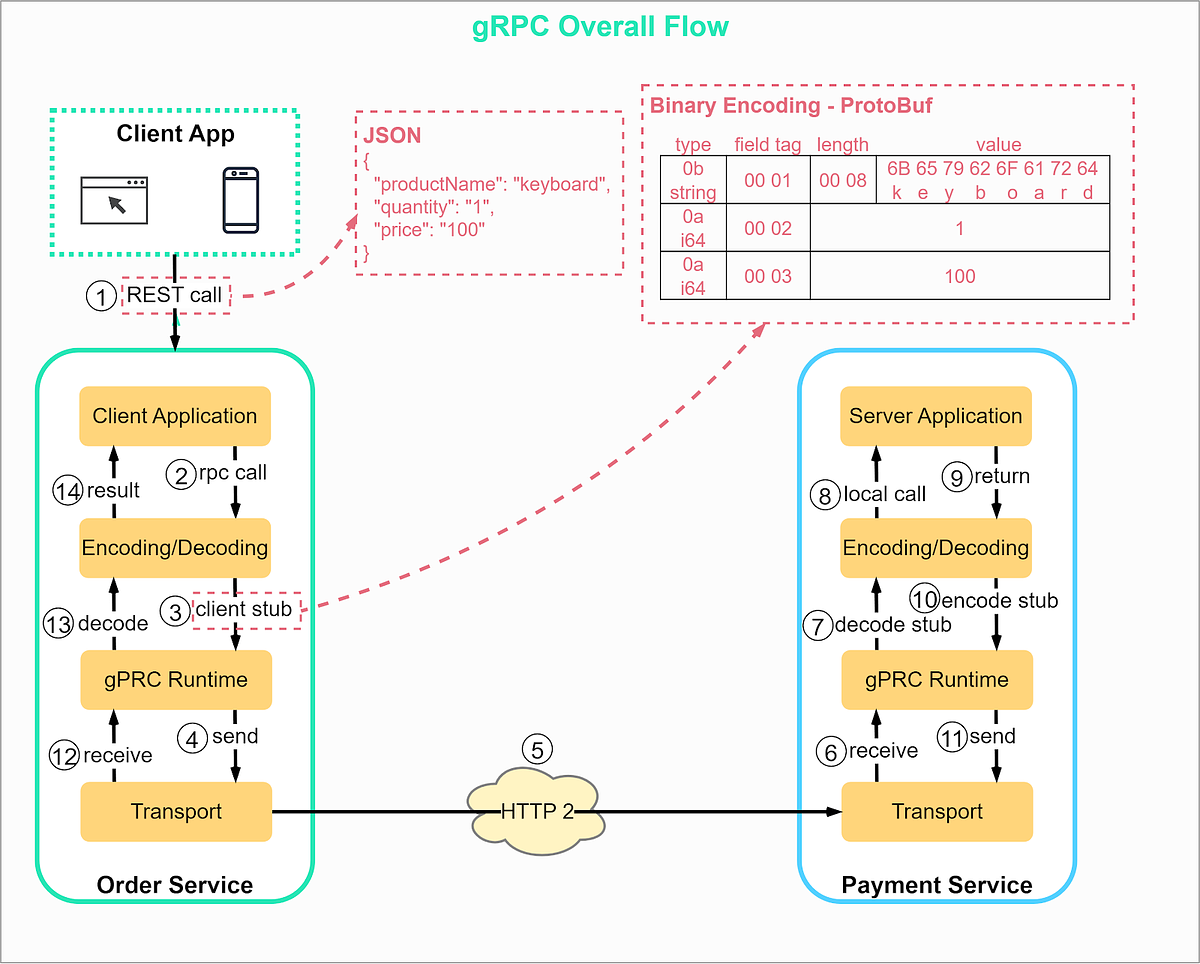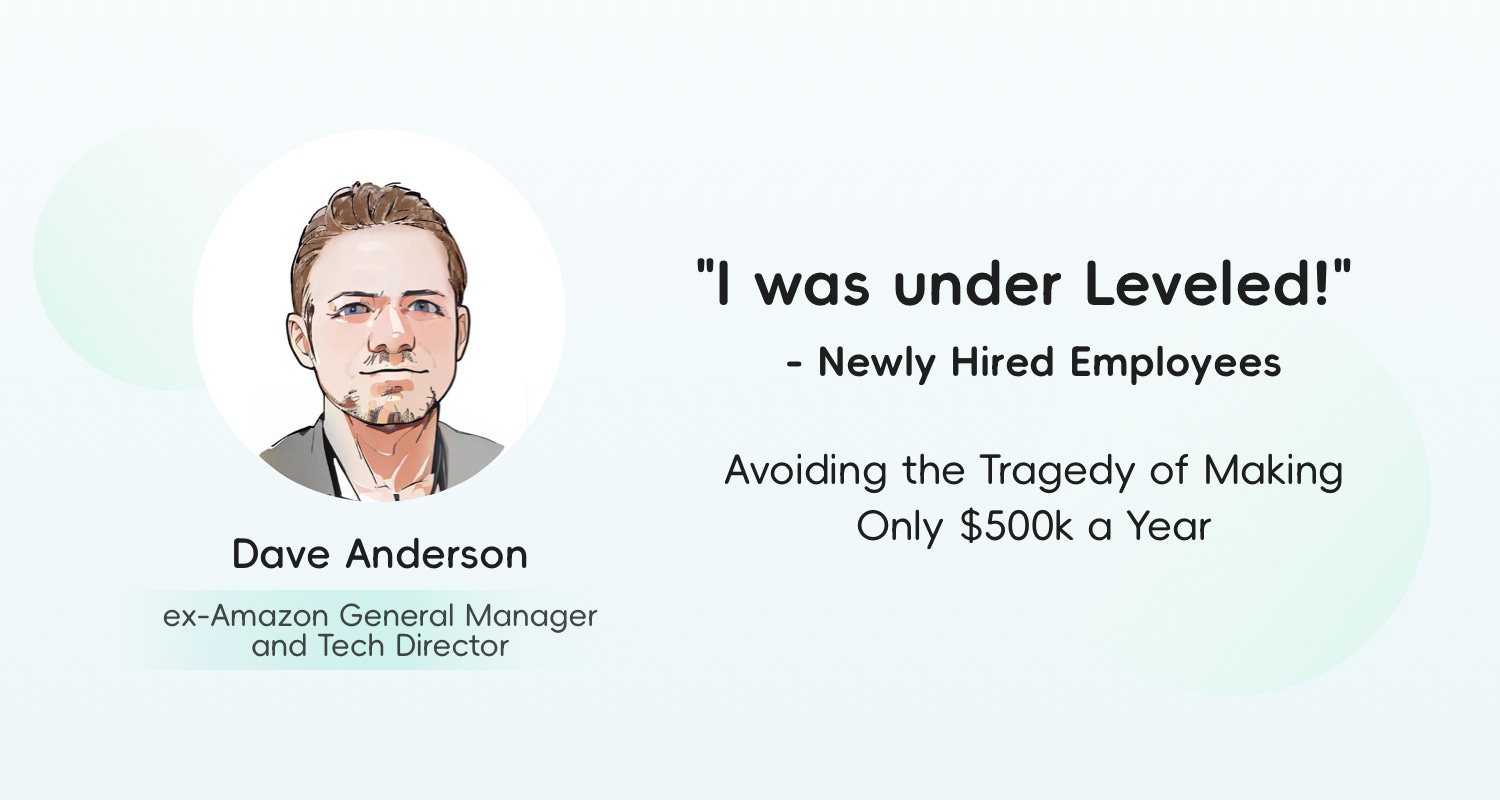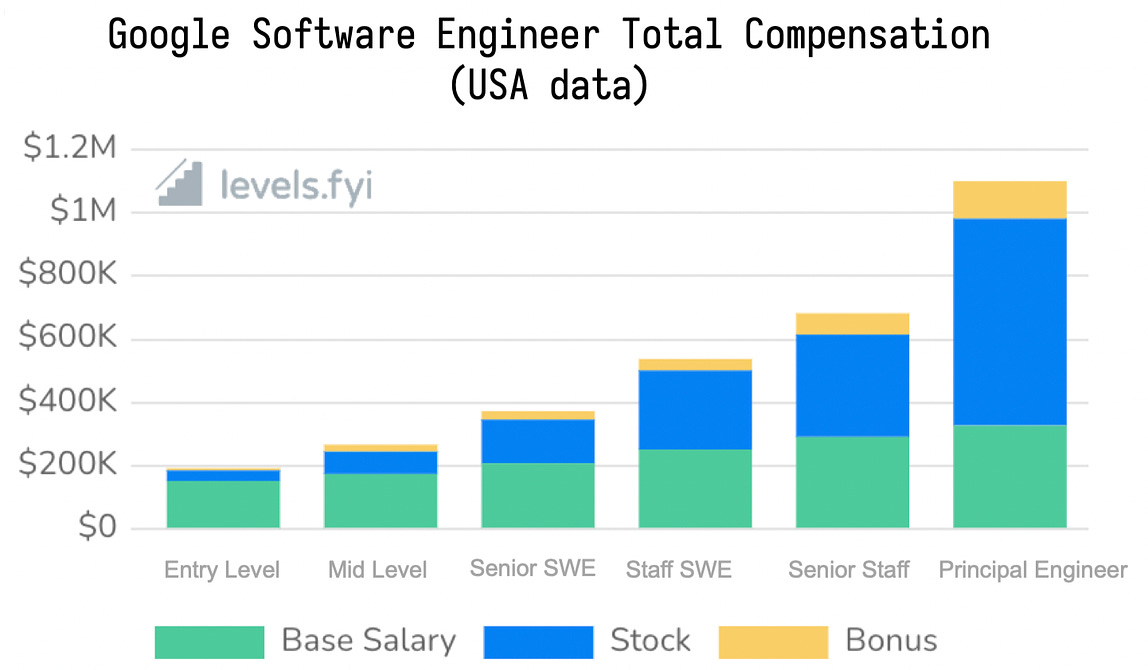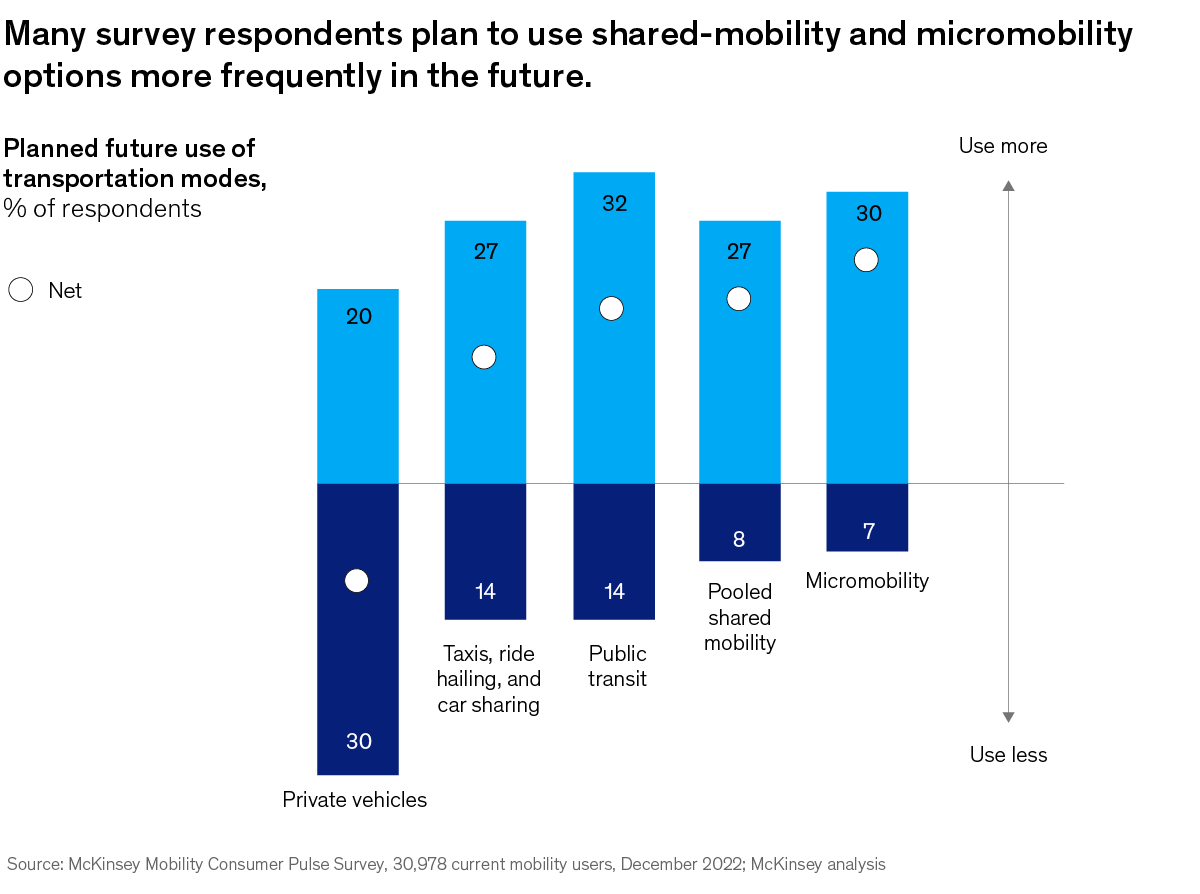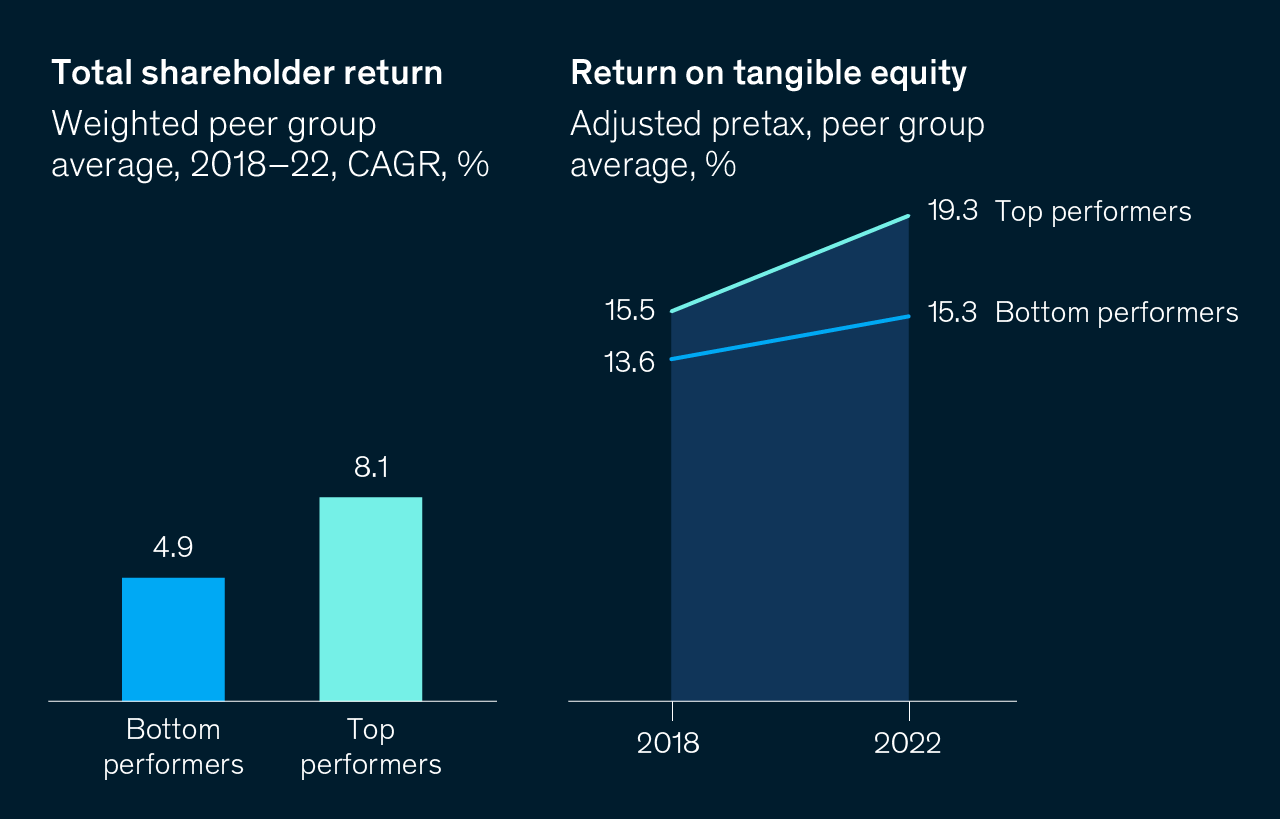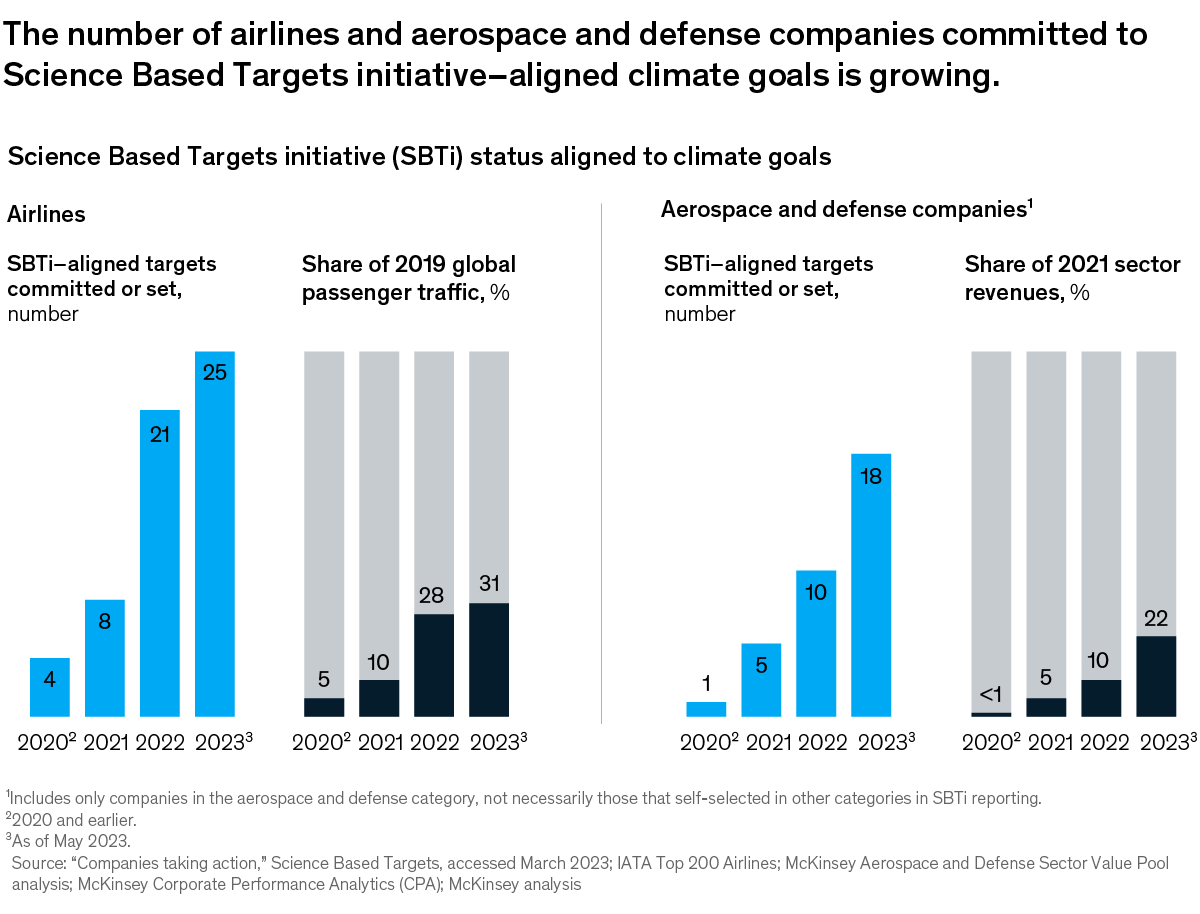Archives
- By thread 5340
-
By date
- June 2021 10
- July 2021 6
- August 2021 20
- September 2021 21
- October 2021 48
- November 2021 40
- December 2021 23
- January 2022 46
- February 2022 80
- March 2022 109
- April 2022 100
- May 2022 97
- June 2022 105
- July 2022 82
- August 2022 95
- September 2022 103
- October 2022 117
- November 2022 115
- December 2022 102
- January 2023 88
- February 2023 90
- March 2023 116
- April 2023 97
- May 2023 159
- June 2023 145
- July 2023 120
- August 2023 90
- September 2023 102
- October 2023 106
- November 2023 100
- December 2023 74
- January 2024 75
- February 2024 75
- March 2024 78
- April 2024 74
- May 2024 108
- June 2024 98
- July 2024 116
- August 2024 134
- September 2024 130
- October 2024 141
- November 2024 171
- December 2024 115
- January 2025 216
- February 2025 140
- March 2025 220
- April 2025 233
- May 2025 239
- June 2025 303
- July 2025 152
-
Which tech trends matter most for organizations in 2023?
On Point
15 technologies to watch
by "McKinsey On Point" <publishing@email.mckinsey.com> - 10:05 - 27 Jul 2023 -
Forward Thinking on how to live our longer lives with Andrew J. Scott
Make a friend of your future self New from McKinsey Global Institute

Forward Thinking on how to live our longer lives with Andrew J. Scott
A British economist talks about longevity and how we can adapt to living for longer.
Make a friend of your future self Prefer audio? Listen to the podcast, and explore past episodes of the Forward Thinking Podcast. Subscribe via Google Podcasts, Apple Podcasts, Spotify, Stitcher, and Amazon Music.

Living longer in better health: Six shifts needed for healthy aging

Share these insights
This email contains information about McKinsey's research, insights, services, or events. By opening our emails or clicking on links, you agree to our use of cookies and web tracking technology. For more information on how we use and protect your information, please review our privacy policy.
You received this email because you subscribed to our McKinsey Global Institute alert list.
Copyright © 2023 | McKinsey & Company, 3 World Trade Center, 175 Greenwich Street, New York, NY 10007
by "McKinsey Global Institute" <publishing@email.mckinsey.com> - 02:58 - 27 Jul 2023 -
"I Was Under Leveled!" — Avoiding the Tragedy of Making Only $500k a Year
"I Was Under Leveled!" — Avoiding the Tragedy of Making Only $500k a Year
While most topics in the ByteByteGo newsletter focus on technical knowledge, we also acknowledge the critical role of soft skills, particularly for senior engineers. In today's issue, we are fortunate to have Dave Anderson, former Amazon General Manager and Tech Director, as our guest contributor. He is renowned for his invaluable career guidance in the industry. I follow his newsletter regularly and have yet to find anyone else who offers such actionable and practical career advice. Open in app or online This is a sneak peek of today’s paid newsletter for our premium subscribers. Get access to this issue and all future issues - by subscribing today.
Latest articles
If you’re not a subscriber, here’s what you missed this month.
Network Protocols behind Server Push, Online Gaming, and Emails
Everything You Always Wanted to Know About TCP But Too Afraid to Ask
To receive all the full articles and support ByteByteGo, consider subscribing:
While most topics in the ByteByteGo newsletter focus on technical knowledge, we also acknowledge the critical role of soft skills, particularly for senior engineers. In today's issue, we are fortunate to have Dave Anderson, former Amazon General Manager and Tech Director, as our guest contributor. He is renowned for his invaluable career guidance in the industry. I follow his newsletter regularly and have yet to find anyone else who offers such actionable and practical career advice.
Follow Dave for more on LinkedIn and Twitter.
I also encourage you to check out his leadership and career-oriented newsletter for further insights.
Senior employees and executives make a common mistake while interviewing. They try to answer the interview questions, instead of focusing on their goals.
It's been a while since I wrote an interview advice article. With the tech layoffs creating a spike in interview coaching demand, I thought that passing along some of my most common feedback would be a good use of my time.
When I was at Amazon, one common complaint I'd hear from newly hired employees was, "I was Under Leveled." What they meant was that they felt that they'd received an offer for a position at a lower level than they deserved.
I distinctly remember one Senior Manager (making in the ballpark of $500k yearly.. yes, poor him), complaining that he'd had 250 people reporting to him at his previous company, and now he only had 25 people. He recognized that Amazon was a great place to be (which was why he took the offer), but he was baffled on how he was leveled like this. It felt like a step back in his career.
How does being under leveled happen to someone? How can you avoid it happening to you?
In the case of that Senior Manager, I took the time to investigate his interview notes to see what had happened. It turns out he made literally all the mistakes I outline below.
I regularly coach senior leaders and executives on interviewing. They're applying for roles at companies like Amazon for Principal, Director, and VP positions. In my first practice round with these employees, many of them made the same mistakes.
It's predictable and avoidable. And it all comes down to not concentrating on your goals.
What are your goals in answering interview questions?
Let's say that I ask a question like, "Tell me about a time you disagreed with a co-worker." It's a very common question.
Now, what is your goal here? Is your primary goal to tell me a story in which you disagreed with a co-worker? No. Because you might have a story which has a great conflict, but it won't accomplish your actual goals. What's the potential problem with your stories?
First, if you answer the question in a way that doesn't convince me to hire you for the job, you've failed.
Second, if you answer the question in a way that suggests that you're a lower level employee than you actually could be, you've failed.
You have two major goals.
You want to answer every question in a way that convinces me to hire you, and your answers should convince me that you're at the maximum possible/reasonable seniority.
But maximum possible seniority? That doesn't seem fair. Feels like gaming the system.
The interviewing system is stupid, inaccurate, inconsistent, and many other insulting words. We haven't invented a better scalable system, but it's not great at making fair decisions.
When in doubt, people will put you at a lower level.
When in doubt, people won't hire you at all.
You want to send the message that you're super remarkable, super valuable, and absolutely at the target level (if not higher).
Understand that your interviewer gets an incredibly short period of time with you. They take those tiny hints of data, and make gigantic assumptions about your capabilities and past performance.
Many of the most impressive career jumps people have made were when they interviewed incredibly well. I've heard of engineers at Amazon jumping two or three levels when interviewing at other companies. I've heard of managers jumping from 18-person teams to 800-person teams through a great interview.
Don't leave career growth or opportunity on the table. Think of the message you're sending.
Communicating Seniority with Peers and Interactions
You talk to someone at a dinner party. They say that they manage teams at Google. That sounds pretty cool to you. Google is a neat company. However, you have no idea how smart they are, or how important they are at Google. They could be an entry-level manager, or a VP.
Then they mention that they had a fun discussion with a VP the other day about AI.
Wham. You're now convinced that they're a senior employee. Certainly, not entry level. They are likely Director or VP level.
How does that work? Because you tend to interact with people around your level of seniority.
Is this fair? Nah. But it's how things work. We deal with practical things in this newsletter.
How can you use that information in an interview?
"Tell me about a time you disagreed with a coworker."
I've had senior leaders, managers of 100+ people, say something like:
"There was a college graduate, newly hired onto the team. As we were kicking off a new project, they said.."
You just announced to your interviewer that the most serious disagreement you had with a co-worker was with an entry-level hire. It sounds to me like you're a line manager (at best).
If you're answering a question where you discuss your peers, or someone you interact with, you must explain a situation where you're communicating with someone at the seniority you're aiming for. If you're interviewing for a Director level position, your interaction must be with other Directors or VPs.
"During a meeting, the VP of Marketing for North America asked..."
There we go. Now you're clearly a senior employee...
Keep reading with a 7-day free trial
Subscribe to ByteByteGo Newsletter to keep reading this post and get 7 days of free access to the full post archives.
A subscription gets you:
An extra deep dive on Thursdays Full archive Many expense it with team's learning budget Like
Comment
Restack
© 2023 ByteByteGo
548 Market Street PMB 72296, San Francisco, CA 94104
Unsubscribe
by "ByteByteGo" <bytebytego@substack.com> - 11:41 - 27 Jul 2023 -
[Online workshop] Troubleshooting Applications and back end performance with APM 360
New Relic
 Register for this online workshop on the 17th August at 10 AM BST/ 11 AM CEST for a comprehensive introduction to New Relic APM 360, the cutting-edge solution for modern distributed applications.
Register for this online workshop on the 17th August at 10 AM BST/ 11 AM CEST for a comprehensive introduction to New Relic APM 360, the cutting-edge solution for modern distributed applications.
APM 360 allows you to get a unified view of critical telemetry data across your stack and development lifecycle. Prevent issues before they escalate and troubleshoot faster with integrated infrastructure monitoring, error user impact analysis, and distributed tracing. APM 360 helps eliminate blind spots with guided workflows, ensuring comprehensive observability.
In this online workshop, you’ll learn how to:
- Use new UI components to troubleshoot, assess user impact, and uncover coverage gaps
- Work with the updated infrastructure table to assess underlying backend issues
- Utilise the new distributed tracing component to quickly assess impacted services
- Explore the error user impact chart
- Determine root cause with errors inbox and error stack traces data
Register now Need help? Let's get in touch. 

 This email is sent from an account used for sending messages only. Please do not reply to this email to contact us—we will not get your response.
This email is sent from an account used for sending messages only. Please do not reply to this email to contact us—we will not get your response.View in browser
This email was sent to info@learn.odoo.com. Update your email preferences.For information about our privacy practices, see our Privacy Policy.
Need to contact New Relic? You can chat or call us at +44 20 3859 9190
Strand Bridge House, 138-142 Strand, London WC2R 1HH
© 2023 New Relic, Inc. All rights reserved. New Relic logo are trademarks of New Relic, Inc.
by "New Relic" <emeamarketing@newrelic.com> - 05:26 - 27 Jul 2023 -
Are you offering the right rewards to middle managers?
On Point
Make middle management a destination Brought to you by Liz Hilton Segel, chief client officer and managing partner, global industry practices, & Homayoun Hatami, managing partner, global client capabilities
• Tight squeeze. Middle managers face a tricky balance between carrying out leadership’s directives or implementing new policies and motivating their direct reports. What people want from work (development in addition to flexibility and higher pay) has changed, but managers often don’t have the training or time to deliver these requests. A 2022 study of 20,000 workers found that more than 50% of managers identified as burned out. Executives who provide feedback in the form of coaching—rather than demands—can help managers feel more supported, a senior leader says. [FT]
• The heart of it all. Management hierarchies—climbing the ladder through a series of linear promotions—might not appeal to everyone. Not every individual contributor wants to manage people, and not every middle manager desires a corner office. Think of middle managers as the connective tissue between tasks and the people who execute them. Organizations lose valuable employees when they get promoted to positions they don’t enjoy, according to McKinsey partner Emily Field and colleagues (authors of the new book, Power to the Middle: Why Managers Hold the Keys to the Future of Work).
• Rethink promotions. Many companies are still in the dark about how to promote top performers while keeping them in the same role. Effective organizations, however, recognize the need to reward inspiring middle managers without drastically changing what they love about their jobs. This model works in the trades, where apprentices eventually become masters in their field. Some companies also allow people in technical roles to take a technical-career track, rather than appointing them to lead a team. Learn how to retain superstar middle managers without promoting them out of the roles that energize them.
— Edited by Gwyn Herbein, editor, Atlanta
This email contains information about McKinsey's research, insights, services, or events. By opening our emails or clicking on links, you agree to our use of cookies and web tracking technology. For more information on how we use and protect your information, please review our privacy policy.
You received this email because you subscribed to the On Point newsletter.
Copyright © 2023 | McKinsey & Company, 3 World Trade Center, 175 Greenwich Street, New York, NY 10007
by "McKinsey On Point" <publishing@email.mckinsey.com> - 12:50 - 27 Jul 2023 -
Rising business opportunities with our ADAS solution
Rising business opportunities with our ADAS solution
Advanced Driver Assistance System (ADAS)
Embrace ADAS Technology for Growth
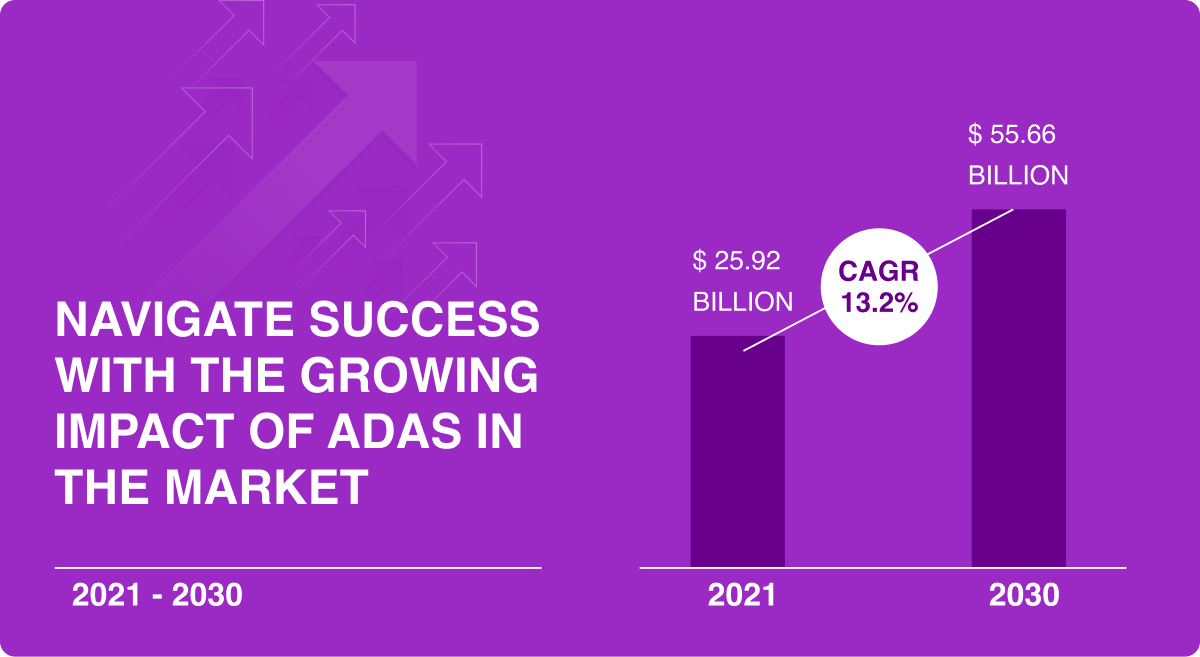
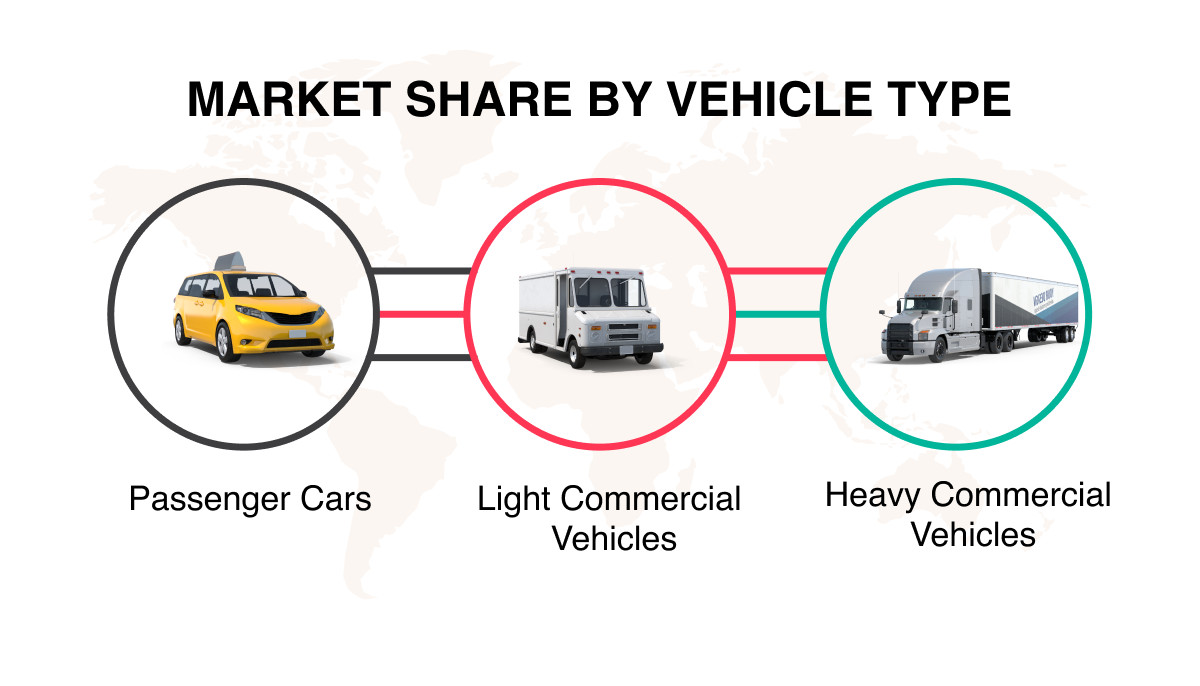
Empowers your clients with real-time alerts and comprehensive reports, making their fleets smarter and safer
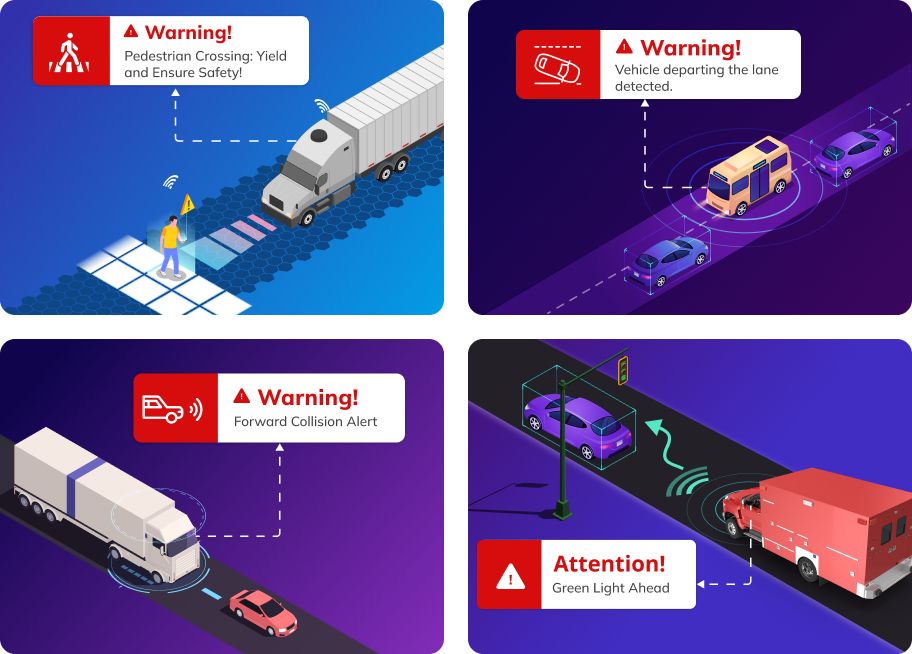
To know more and dive deeper

Uffizio Technologies Pvt. Ltd., 4th Floor, Metropolis, Opp. S.T Workshop, Valsad, Gujarat, 396001, India
by "Sunny Thakur" <sunny.thakur@uffizio.com> - 07:00 - 26 Jul 2023 -
Generative AI and the future of work in America
Download the full report Brought to you by Liz Hilton Segel, chief client officer and managing partner, global industry practices, & Homayoun Hatami, managing partner, global client capabilities
Since the pandemic, the way we think about work has dramatically evolved—remote and hybrid work have become commonplace and companies are quickly adopting automation technologies such as generative AI. Meanwhile, a remarkable number of workers in the US are changing jobs—more than 8 million occupational shifts took place from 2019 through 2022 and an additional 12 million occupational shifts are expected by 2030. How should we make sense of all of this? In a new McKinsey Global Institute report, McKinsey’s Kweilin Ellingrud, Saurabh Sanghvi, Gurneet Singh Dandona, Anu Madgavkar, Michael Chui, Olivia White, and Paige Hasebe explain the forces that are affecting the US labor market, including the potential of generative AI boosting productivity in the US. Be sure to download the full report as you navigate the future of work.
Quote of the day
Chart of the day
ALSO NEW
— Edited by Joyce Yoo, editor, New York
Share these insights
Did you enjoy this newsletter? Forward it to colleagues and friends so they can subscribe too. Was this issue forwarded to you? Sign up for it and sample our 40+ other free email subscriptions here.
This email contains information about McKinsey's research, insights, services, or events. By opening our emails or clicking on links, you agree to our use of cookies and web tracking technology. For more information on how we use and protect your information, please review our privacy policy.
You received this email because you subscribed to our McKinsey Global Institute alert list.
Copyright © 2023 | McKinsey & Company, 3 World Trade Center, 175 Greenwich Street, New York, NY 10007
by "McKinsey Daily Read" <publishing@email.mckinsey.com> - 06:08 - 26 Jul 2023 -
Are you rewired for a successful digital transformation?
Five Fifty
Get your briefing Digital transformations can create real business value: digital leaders improve shareholder returns and outperform their peers, say senior partners Eric Lamarre, Kate Smaje, and Rodney Zemmel.
Share these insights
Did you enjoy this newsletter? Forward it to colleagues and friends so they can subscribe too. Was this issue forwarded to you? Sign up for it and sample our 40+ other free email subscriptions here.
This email contains information about McKinsey’s research, insights, services, or events. By opening our emails or clicking on links, you agree to our use of cookies and web tracking technology. For more information on how we use and protect your information, please review our privacy policy.
You received this email because you subscribed to our McKinsey Quarterly Five Fifty alert list.
Copyright © 2023 | McKinsey & Company, 3 World Trade Center, 175 Greenwich Street, New York, NY 10007
by "McKinsey Quarterly Five Fifty" <publishing@email.mckinsey.com> - 04:03 - 26 Jul 2023 -
Calculate sales tax and VAT in real time, automatically
Calculate sales tax and VAT in real time, automatically
Here's what's new with Woo this month What's New with Woo
When it comes to collecting taxes, you don’t want to leave things to chance.
Take the effort out of determining tax rates and sell confidently across borders with automated tax management from Avalara AvaTax — now covering more VAT scenarios when you sell into or across the EU and UK.
New in our Marketplace
Bite-sized updates
- Spend less time managing subscriptions when you update prices in bulk — for new and existing subscribers. You can universally change your subscription costs and send detailed email notifications, all from the same place.
- Create a consistent journey across channels and connect with customers on their terms — where and when they want to shop. Here’s how to build an omnichannel strategy that drives sales and grows loyalty.
- Hats off to CedCommerce, our latest Platinum Certified WooExpert agency! Looking to build a powerful multichannel presence for your store? Get in touch.
- Create a consistent journey across channels and connect with customers on their terms — where and when they want to shop. Here’s how to build an omnichannel strategy that drives sales and grows loyalty.
- A great product page can be the key that turns a visitor into a paying customer. Learn how to design pages that make your products irresistible.
Help us build a better Woo
Exciting things are in the works and you can help them take shape.



This email was sent to info@learn.odoo.com You're receiving it because you signed up for updates when creating an account or purchasing a product subscription on WooCommerce.com.
No longer wish to hear from us? Unsubscribe from marketing emails or all email communication. You may still receive transactional and/or account-related emails from WooCommerce.com.
WooCommerce, Inc. is located at 60 29th St #343, San Francisco, CA 94110, U.S.A.
View an online version of this email.

© 2023 WooCommerce, Inc. – an Automattic company.
by "Woo" <support+marketing@woocommerce.com> - 12:29 - 26 Jul 2023 -
Urgent
Dear info@learn.odoo.comI have sent you this email from Goma, Democratic Republic of Congo.
I am writing to inquire if you or your company can supply food (rice,beans) to this region.
We shall pay upfront, before your supply.
Regards,David Moussavou
david_moussavou@yahoo.comGoma Democratic Republic of Congo
by "David moussavou" <support@hostgai.com> - 07:55 - 26 Jul 2023 -
Give Your APIs the Spotlight They Deserve
SmartBear
Introducing SwaggerHub PortalHi Abul,
We are excited to announce SwaggerHub Portal, SwaggerHub’s new feature to customize consumer-facing documentation that drives the adoption of your APIs.
At SmartBear, it is our goal to provide you with practical tools to build quality software faster. SwaggerHub and SwaggerHub Portal will work together to centralize your API design, collaboration, and documentation all in one place.
Save time and resources by instantly syncing your API designs from SwaggerHub with zero context switching. Adding this integrated feature to your SwaggerHub toolkit will equip your consumers with comprehensive onboarding guides to understand your APIs and easily bring them to market.
If you want to learn about API documentation and this new release, check out the resources below.
 Resources for Getting Started
Resources for Getting Started
Best,
The SwaggerHub Team This email was sent to info@learn.odoo.com by SmartBear Software, 450 Artisan Way, Somerville, MA. 02145, 617684.2600, www.smartbear.com. We hope you found this email of interest. However, we value your privacy. If you do not wish to receive future correspondence from us, please click here to manage email preferences.
This email was sent to info@learn.odoo.com by SmartBear Software, 450 Artisan Way, Somerville, MA. 02145, 617684.2600, www.smartbear.com. We hope you found this email of interest. However, we value your privacy. If you do not wish to receive future correspondence from us, please click here to manage email preferences.
by "The SwaggerHub Team" <swaggerhub-team@smartbearmail.com> - 05:33 - 26 Jul 2023 -
Taking the pulse of US consumers
On Point
Key trends in consumer spending Brought to you by Liz Hilton Segel, chief client officer and managing partner, global industry practices, & Homayoun Hatami, managing partner, global client capabilities
• Summer getaway. Travel fares are falling sharply in the US leisure industry, a welcome sign for government officials hoping to cool down inflation without tipping the economy into recession. Airline ticket prices dropped 19% from June 2022 to June 2023, while car rental rates decreased 12%, according to US government data. Demand for travel is still going strong. Roughly six in ten consumers have already traveled for leisure or are planning to do so in 2023, a recent survey of nearly 3,700 US adults found. [NBC]
• Spending stalls. As we head into the summer months, temperatures may be rising across America, but consumer spending is heading in the opposite direction, McKinsey partner Kari Alldredge and coauthors reveal. In fact, across all age and income groups, consumer spending (as measured by credit card expenditures) is lower than it was a year ago. Although the rate of decline was relatively consistent across demographic groups, low-income consumers showed the steepest drop in spending, at –4.5%.
• Urge to splurge. In April 2023, at least half of Gen Zers and millennials in every income group said that they were planning to splurge. But consumers don’t always do what they intend: real year-over-year spending fell across all income groups that month. Still, some categories seem to be benefiting from the intent to spend freely. Travel was a top category for consumers wanting to splurge in the second quarter of 2023, and travel saw 2% real year-over-year spending growth in April. See our latest research on US consumer spending.
— Edited by Belinda Yu, editor, Atlanta
This email contains information about McKinsey's research, insights, services, or events. By opening our emails or clicking on links, you agree to our use of cookies and web tracking technology. For more information on how we use and protect your information, please review our privacy policy.
You received this email because you subscribed to the On Point newsletter.
Copyright © 2023 | McKinsey & Company, 3 World Trade Center, 175 Greenwich Street, New York, NY 10007
by "McKinsey On Point" <publishing@email.mckinsey.com> - 12:37 - 26 Jul 2023 -
What it takes to successfully transition out of the CEO role
Embrace what's next Brought to you by Liz Hilton Segel, chief client officer and managing partner, global industry practices, & Homayoun Hatami, managing partner, global client capabilities
Being a CEO is undoubtedly a difficult job, but leaving the role can often be even more challenging. Much like a relay race, the goal of the handover is to ensure that the next person is well positioned to perform even better after the baton is handed off. Based on interviews with some of the world’s most well-known chief executives, McKinsey senior partners Carolyn Dewar, Scott Keller, Vikram Malhotra, and Kurt Strovink suggest four best practices for CEOs who are thinking about the end game: deciding when to go, finishing the job of succession planning, ensuring a clean handoff to the successor, and embracing what’s next. Check out the new McKinsey Quarterly article and see what it takes to achieve a gold-medal-worthy finish to your CEO tenure.
Quote of the day
Chart of the day
ALSO NEW
— Edited by Joyce Yoo, editor, New York
Share these insights
Did you enjoy this newsletter? Forward it to colleagues and friends so they can subscribe too. Was this issue forwarded to you? Sign up for it and sample our 40+ other free email subscriptions here.
This email contains information about McKinsey’s research, insights, services, or events. By opening our emails or clicking on links, you agree to our use of cookies and web tracking technology. For more information on how we use and protect your information, please review our privacy policy.
You received this email because you subscribed to our McKinsey Quarterly alert list.
Copyright © 2023 | McKinsey & Company, 3 World Trade Center, 175 Greenwich Street, New York, NY 10007
by "McKinsey Daily Read" <publishing@email.mckinsey.com> - 05:15 - 25 Jul 2023 -
Get 20% off your next extension for 10 minutes of feedback
Get 20% off your next extension for 10 minutes of feedback
Help influence the future of Woo Hi there,
We appreciate you using WooCommerce to help manage your store and believe one of the best ways to continue improving Woo is learning how merchants like you market their businesses.
That's why we're offering 20% off your next marketing extension* in exchange for your feedback.
Filling out our short survey should only take about 10 minutes of your time. Your insights will help us better understand the needs and challenges of marketing an online business in 2023 – and can influence future WooCommerce releases.
* Coupon offer excludes all Woo Express plans, Storefront Extensions Bundle, WooCommerce In-Person Payments M2 card reader, and WooCommerce In-Person Payments WisePad 3 card reader. Valid on the purchase price for new purchases only — not applicable for subscription renewals. All product subscriptions renew at regular price after the first year. Cannot be used in conjunction with any other promotions, discounts, or coupons.
This email was sent to info@learn.odoo.com. You're receiving it because you opted in when creating an account or purchasing a product subscription on WooCommerce.com.
No longer wish to hear from us? Unsubscribe from marketing emails or all email communication. You may still receive transactional and/or account-related emails from WooCommerce.com.
View an online version of this email.
WooCommerce, Inc. is located at 60 29th St #343,
San Francisco, CA 94110, U.S.A.




by "Woo" <research@woocommerce.com> - 12:30 - 25 Jul 2023 -
You're Invited! Our EMEA User Meetups are Back this September
New Relic
 Event Invitation
Event InvitationOur EMEA User Meetups are Back Coming to a city near you this September Join us for food, drinks, swag and of course - data talk! We’ve got a jam-packed agenda of hands-on talks, before wrapping up the afternoon with food and drinks.
Register Now Join us at our upcoming ‘Back to School edition’ user meetups happening across EMEA this September in a city near you.Tel Aviv - Wednesday 6 September RegisterStockholm - Tuesday 12 September RegisterAmsterdam - Wednesday 13 September Register
Paris - Thursday 14 September Register (EN) or Register (FR)Manchester - Tuesday 19 September RegisterMadrid - Tuesday 26 September RegisterTap into the expertise of our local engineers and fellow users as they show you what’s new in observability and share best practices on how they are using New Relic. Our theme will be ‘back to school’, where we’ll give you essential tips and shortcuts to help you prepare for the peak sales period ahead.
Whether you are new to New Relic or an experienced user, there’s something for everyone. And we’ll also be throwing in some great giveaways on the day! Don’t forget to bring your laptop and charger so we can get hands on. We look forward to seeing you there!Register Now 
View in browser
This email was sent to info@learn.odoo.com. Update your email preferences.For information about our privacy practices, see our Privacy Policy.
Need to contact New Relic? You can chat or call us at +44 20 3859 9190
Strand Bridge House, 138-142 Strand, London WC2R 1HH
© 2023 New Relic, Inc. All rights reserved. New Relic logo are trademarks of New Relic, Inc.
by "New Relic EMEA Events" <emeamarketing@newrelic.com> - 05:07 - 25 Jul 2023 -
Can traditional companies snag the tech workers needed in the age of AI?
On Point
How rewiring HR could help Brought to you by Liz Hilton Segel, chief client officer and managing partner, global industry practices, & Homayoun Hatami, managing partner, global client capabilities
• Courting tech talent. Following layoffs as well as a 33% decrease in job openings in the tech industry in the first three months of 2023, government agencies and a wide range of other employers, including hoteliers, financial institutions, and railroad companies, are snapping up tech workers who were once eager to work only for tech giants. Yet overall, there is still stiff competition for tech talent: the unemployment rate among American tech workers is just 2%. [AP]
• Another company’s gain. Unlike tech companies, incumbent organizations in other industries have historically had trouble attracting the tech talent they need. This year’s tech industry layoffs create an opportunity for traditional players: McKinsey analysis from the first half of 2023 finds that more than 80% of laid-off tech workers find new jobs within three months, often with nontech companies. An end-to-end approach to HR can help attract—and just as important, retain—tech talent at these organizations, reveal McKinsey senior partner Dana Maor and coauthors.
— Edited by Heather Hanselman, editor, Atlanta
This email contains information about McKinsey's research, insights, services, or events. By opening our emails or clicking on links, you agree to our use of cookies and web tracking technology. For more information on how we use and protect your information, please review our privacy policy.
You received this email because you subscribed to the On Point newsletter.
Copyright © 2023 | McKinsey & Company, 3 World Trade Center, 175 Greenwich Street, New York, NY 10007
by "McKinsey On Point" <publishing@email.mckinsey.com> - 12:24 - 25 Jul 2023 -
You still have time to register for August DevCon
You still have time to register for August DevCon
Join us on August 9th for our free workshop


Beyond the Continuum: The Importance of Quantization in Deep Learning
August 9, 2023; 7PM-8PM IST
Register now 


Md Abul,
Quantization is a valuable process in Deep Learning of mapping continuous values to a smaller set of discrete finite values.
In this talk, we will explore the different types of quantization techniques that can be applied to deep learning models. In addition, we will give an overview of the Neural Network Compression Framework (NNCF) and how it complements the OpenVINO™ toolkit to achieve outstanding performance.
What you’ll learn:
- The value of quantization and different types of quantization
- How to harness NNCF with the OpenVINO™ toolkit
- A Jupyter Notebook demonstrating a neural network graph before-and-after quantization with performance comparisons
Register today 


Adrian Boguszewski
AI Software Evangelist, Intel
Adrian is frequently a speaker at data science conferences, enjoys working with big data and creating solutions for big companies in Poland.

Zhuo Wu
AI Software Evangelist, Intel
Zhuo is an AI evangelist at Intel focusing on OpenVINO toolkit. Her work ranges from deep learning technologies to 5G wireless communication technologies.Upcoming Workshops
Sept
5
How To Build a Smart Queue Management System Step by Step? From Zero to Hero
7PM-8PM IST

Register early 
On-Demand Workshops
Harness Generative AI Acceleration with OpenVINO™ Toolkit

OpenVINO™ 2023.0 – See What’s New







If you forward this email, your contact information will appear in any auto-populated form connected to links in this email.
This was sent to info@learn.odoo.com because you are subscribed to Webinars. To view and manage your marketing-related email preferences with Intel, please click here.
© 2023 Intel Corporation
Intel Corporation, 2200 Mission College Blvd., M/S RNB4-145, Santa Clara, CA 95054 USA. www.intel.com
Privacy | Cookies | *Trademarks | Unsubscribe | Manage Preferences
by "Intel Developer Zone" <intel.developer.zone@plan.intel.com> - 02:26 - 24 Jul 2023 -
What could a new era mean for Latin America?
Shape the future New from McKinsey Global Institute

What could a new era mean for Latin America?
Shape the future 

The economic potential of generative AI: The next productivity frontier
Share these insights
This email contains information about McKinsey's research, insights, services, or events. By opening our emails or clicking on links, you agree to our use of cookies and web tracking technology. For more information on how we use and protect your information, please review our privacy policy.
You received this email because you subscribed to our McKinsey Global Institute alert list.
Copyright © 2023 | McKinsey & Company, 3 World Trade Center, 175 Greenwich Street, New York, NY 10007
by "McKinsey Global Institute" <publishing@email.mckinsey.com> - 12:57 - 24 Jul 2023 -
Last chance to register for the Edge Insight for Industrial Overview
Last chance to register for the Edge Insight for Industrial Overview

Edge Insight for Industrial Overview
Thursday, July 27, 2023
07:30 am - 08:30 am PDTRegister Now 
Edge Insight for Industrial consists of a set of pre-integrated ingredients optimized for Intel® architecture. It includes modules that enable data collection, storage, and analytics for both time-series and video data, as well as the ability to act on these insights by sending downstream commands to tools or devices.
In this session you will learn EII v4.0.0 key features and improvements.Register Now 
Speaker

Murni Jasamai
Enabling and Optimization Engineer- Intel
Murni has joined Intel since 2018 and works in the Machine Vision and Analytics domains to support solutions for customer enablement. Currently, she is working as a solution enabling and optimization engineer, and one of the main focus areas that she is supporting is Edge Insight for Industrial.





If you forward this email, your contact information will appear in any auto-populated form connected to links in this email.
This was sent to info@learn.odoo.com because you are subscribed to Webinars. To view and manage your marketing-related email preferences with Intel, please click here.
© 2023 Intel Corporation
Intel Corporation, 2200 Mission College Blvd., M/S RNB4-145, Santa Clara, CA 95054 USA. www.intel.com
Privacy | Cookies | *Trademarks | Unsubscribe | Manage Preferences
by "Intel Corporation" <intel@plan.intel.com> - 11:32 - 24 Jul 2023 -
Register Now for webinar - Overview: Intel® Developer cloud for the Edge – Bare-metal Development
Register Now for webinar - Overview: Intel® Developer cloud for the Edge – Bare-metal Development

Overview: Intel® Developer cloud for the Edge – Bare-metal Development
Live Virtual training
Thursday, August 03, 2023
08:30 am - 9:30 am PDTRegister Now 
Intel® Developer Cloud for the Edge is designed to help you prototype, evaluate, and benchmark AI and edge solutions on Intel® hardware with immediate worldwide access. Within the Developer cloud, the Bare-metal platform enables you to develop or import your computer vision or edge AI application using a JupyterLab environment on a bare-metal infrastructure.
In this session, you will learn:
- Intel® Developer Cloud for the Edge Overview
- Gain an understanding of Intel® Developer Cloud for the Edge, its key features, and the value it offers for edge computing.
- Software portfolio
- Discover how to harness the power of OpenVINO™ 2.0 API to build applications using code snippets, create reusable blocks of code to accelerate development.
- Explore the capabilities of Deep Learning Workbench for fine-tuning and optimizing your AI models.
- Explore real-world use cases with telemetry insights, demonstrating the practical application of the software portfolio.
- Hardware portfolio
- Get an exclusive look at the latest and greatest hardware onboarded on the Developer Cloud in 2022-2023
- Gain insights into the hardware's capabilities and how it can enhance your edge computing applications.
- Learn about workload testing and how to analyze inference performance on different Intel® Hardware.
- Discover how telemetry insights can provide valuable optimization opportunities for your projects.
- BKMs for software and hardware combinations
- Recommendations and guidelines for achieving optimal performance with specific software and hardware combinations.
Register Now 
Speaker

Monique Jones
Developer Cloud for the Edge - Technical Product Manager
IntelMeet Monique, a passionate technical product manager for Intel Developer Cloud for the Edge with 10+ years of experience in AI and cutting-edge technology. She brings a unique blend of technical expertise and product management skills to solve complex business challenges and drive innovation. Prior to her current role, as a senior software engineer and team lead at Intel, Monique developed end-to-end AI solutions and optimized AI models for Intel hardware, resulting in multi-million dollar design wins. Her experience and technical proficiency make her a sought-after speaker at worldwide conferences and events. Monique holds a Bachelor of Science in Electrical Engineering/Computer Engineering from Texas State University and is dedicated to staying current with the latest technology to leverage AI solutions for transformative change.





If you forward this email, your contact information will appear in any auto-populated form connected to links in this email.
This was sent to info@learn.odoo.com because you are subscribed to Webinars. To view and manage your marketing-related email preferences with Intel, please click here.
© 2023 Intel Corporation
Intel Corporation, 2200 Mission College Blvd., M/S RNB4-145, Santa Clara, CA 95054 USA. www.intel.com
Privacy | Cookies | *Trademarks | Unsubscribe | Manage Preferences
by "Intel Corporation" <intel@plan.intel.com> - 11:32 - 24 Jul 2023







